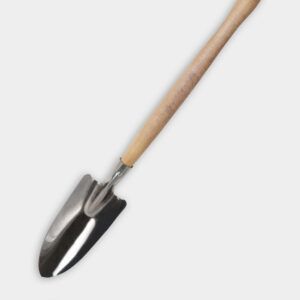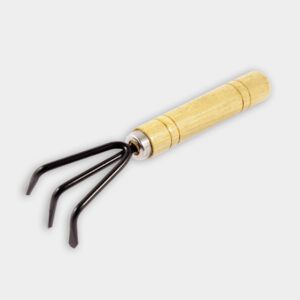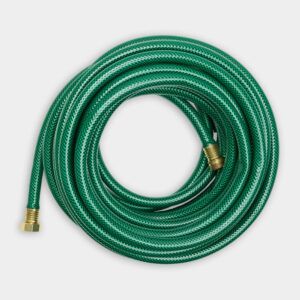We may be compensated if you purchase through links on our website. Our team is committed to delivering honest, objective, and independent reviews on home products and services.
Project details
Skill
Cost
Estimated Time
Hydrangeas are beloved for their stunning, showy blooms that add a touch of elegance to any garden. These versatile shrubs come in various colors and sizes, making them a popular choice for both novice and experienced gardeners. In this guide, we’ll explore how to select the right hydrangea for your landscape and hardiness zone and provide step-by-step instructions for planting these beautiful flowers. This Old House landscaping contractor Roger Cook shares his expertise on choosing and planting hydrangeas in the video above.
*Unless otherwise noted, costs in this article reflect an average of prices that our team found from hardware stores like Lowes and Home Depot, and on Amazon.com.
Selecting the Right Hydrangea
When it comes to choosing a hydrangea, there are several factors to consider. Making the right choice from among the various species available to your specific garden conditions will ensure your hydrangeas thrive.
Types of Hydrangeas
There are several popular types of hydrangeas, each with its own unique characteristics:
- Bigleaf hydrangeas (Hydrangea macrophylla): Known for their large, colorful blooms that can change color based on soil pH
- Oakleaf hydrangeas (Hydrangea quercifolia): Native to North America, featuring distinctive oak-like leaves and white flowers
- Panicle hydrangeas (Hydrangea paniculata): Hardy plants with cone-shaped flowers that bloom late in the season
- Smooth hydrangeas (Hydrangea arborescens): Known for their large, round flower heads and ability to tolerate more sun
Considering Your Garden Conditions
Before selecting a hydrangea, assess your garden’s conditions to ensure the plant will thrive:
- Available space: Consider the mature size of the plant when selecting a location
- Climate: Choose a variety that is suitable for your USDA Hardiness Zone
- Soil type: Hydrangeas generally prefer well-draining, rich soil
- Sunlight: Most hydrangeas prefer partial shade, but some varieties can tolerate more sun
Planting Your Hydrangea
Once you’ve chosen the perfect hydrangea for your garden, it’s time to plant. Follow these steps to ensure your new shrub gets off to a great start.
Timing Your Planting
The best time to plant hydrangeas is in the spring or fall when temperatures are mild. This allows the plant to establish its root system before facing extreme weather conditions. Roger Cook demonstrates planting a hydrangea in early fall, which is an ideal time.
Preparing the Planting Site
Proper site preparation supports the success of your hydrangea. To begin, choose a location with the proper amount of sunlight for your specific variety. Next, clear the area of weeds and grass. Dig a hole twice as wide as the root ball and just as deep. Finally, amend the soil with compost to improve drainage and fertility.
Planting Process
Follow these steps to plant your hydrangea:
- Remove the plant from its container and gently loosen the roots by gently scratching the sides with a cultivator.
- Place the plant in the hole and make sure it’s about the same depth as it was in the container.
- Backfill the hole with the amended soil, firming it gently around the roots.
- Water thoroughly to settle the soil and eliminate air pockets.
Watering and Mulching
Post-planting care helps the plant’s health. Water deeply and regularly, especially during the first growing season. Apply a 2–3-inch layer of organic mulch around the base of the plant, keeping it away from the stem. Watch soil moisture and adjust watering as needed.
Additional Planting Tips
Apart from the essentials, there are additional tips to enhance your hydrangea’s growth:
- Spacing: Provide adequate spacing between plants to allow for proper air circulation
- Companion plants: Plant hydrangeas alongside other shade-loving plants like ferns and hostas
- Monitoring growth: Regularly check for signs of stress or disease and address them promptly
Caring for Your Hydrangea
Proper care will ensure your hydrangea thrives and produces abundant blooms year after year.
Pruning
Pruning requirements vary depending on the type of hydrangea:
- Bigleaf and oakleaf hydrangeas: Prune after flowering in late summer
- Panicle and smooth hydrangeas: Prune in late winter or early spring before new growth begins
Fertilizing
Feed your hydrangea with a balanced, slow-release fertilizer in spring as new growth emerges. Avoid over-fertilizing, as this can lead to lush foliage at the expense of flowers.
Winter Protection
In colder regions, protect your hydrangeas from winter damage. Start by applying a thick layer of mulch around the base of the plant. For severe winter conditions, wrap the shrub in burlap. If you have potted hydrangeas, move them to a protected area or bury the pot in the ground.
Handling Pests and Diseases
Even with proper care, hydrangeas can sometimes face challenges from pests and diseases. Here are a few to watch for:
- Aphids: These small insects can cluster on new growth. Treat them with insecticidal soap.
- Powdery mildew: A common fungal issue that appears as a white powder on leaves. Ensure good air circulation and avoid overhead watering to prevent this.
Troubleshooting Common Hydrangea Issues
Even with meticulous care, hydrangeas can sometimes face challenges. Here are some common issues and how to address them:
Lack of Blooms
If your hydrangea isn’t blooming, consider these potential causes:
- Improper pruning: Ensure you’re pruning at the right time for your specific variety
- Insufficient sunlight: Move the plant to a sunnier location if necessary
- Late spring frost: Protect buds from frost damage in early spring
- Wrong variety for Hardiness Zone: Your hydrangea may be a species that isn’t suited for your Hardiness Zone, like the example in the video.
Leaf Problems
Hydrangea leaves can sometimes develop issues:
- Brown spots: Indicate a fungal disease—improve air circulation and avoid overhead watering
- Wilting: Often caused by under-watering or excessive heat, so adjust watering accordingly
- Yellowing leaves: This may indicate nutrient deficiency or overwatering
Enhancing Hydrangea Blooms
Apart from regular care, a few additional tips can help enhance the blooms of your hydrangea.
Adjusting Soil pH
For bigleaf hydrangeas, bloom color can be influenced by soil pH. Acidic soils (pH below 6) result in blue flowers, while alkaline soils (pH above 7) lead to pink flowers. Test your soil pH and amend it accordingly using aluminum sulfate to lower pH—like Roger demonstrates in the video—or lime to raise it.
Providing Adequate Nutrients
In addition to regular fertilizing, providing hydrangeas with additional nutrients can enhance blooms. Use a mix rich in phosphorus. Organic options like bone meal and compost can be beneficial as well.
Optimal Watering Techniques
Hydrangeas benefit from consistent and deep watering. Consider using a drip irrigation system to ensure plants receive a steady supply of moisture without overdoing it.
Creative Landscaping with Hydrangeas
Hydrangeas can be more than just additions to your garden—they can be centerpieces. Here are some creative landscaping ideas:
Designing Hydrangea Borders
Use hydrangeas to create stunning borders along pathways or garden edges. Their lush blooms add color and texture. Pair them with evergreen shrubs to maintain visual interest year-round.
Mixing Varieties
Incorporate different types of hydrangeas for diverse textures and bloom times. For example, mix bigleaf and panicle hydrangeas for a prolonged blooming season.
Creating Focal Points
Plant hydrangeas in strategic locations to serve as eye-catching focal points in your garden. Use them around seating areas, near entryways, or as part of larger flower beds.
Our Conclusion
Choosing and planting hydrangeas can be incredibly rewarding for any gardener. By selecting the right variety for your local climate, providing proper planting and care techniques, and employing additional tips for enhancing blooms, you can enjoy these stunning shrubs for years to come. Remember to be attentive to factors like sunlight, soil type, and climate when making your selection. Don’t hesitate to experiment with different varieties to find your perfect hydrangea.



